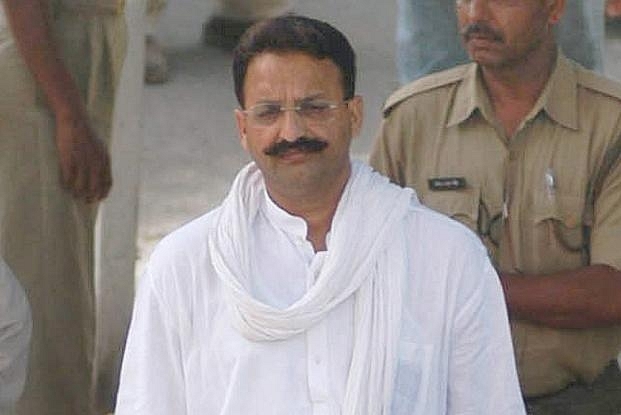Insta
CBI Special Court Forced To Acquit Mukhtar Ansari In BJP MLA Murder Case As Witnesses Turn Hostile

Mukhtar Ansari (PTI)
Expressing concern that the witnesses turned hostile, a special CBI court on Wednesday acquitted gangster-turned-politician Mukhtar Ansari and five others from the charges of murdering Bharatiya Janata Party(BJP) legislator Krishnanand Rai in 2005, reports Times of India.
Stressing on the witness protection, special judge Arun Bharadwaj said, "unfortunately, prosecution's case has suffered as all eyewitnesses and other material witnesses turned hostile. The verdict might have been different had witnesses been brought under the Witness Protection Scheme, 2018."
Krishnanand Rai, the then MLA of Mohammadabad constituency in Uttar Pradesh, had reported a threat to his life from Ansari brothers -- Mukhtar and Afzal -- after a firing incident on 13 January 2004. He was provided with five armed security guards by the erstwhile Mulayam Singh Yadav government.
On 29 November 2005, a group of seven-eight gunmen stormed upon Rai's convoy and fired indiscriminately for around ten minutes. Rai and six others in the convoy were killed in the incident. Sophisticated weapons like AK-47, AK-56 and 7.62 mm SLR are said to be used in the crime. A chargesheet was filed against the Ansari brothers along with nine others based on the complaint lodged by slain MLA's brother Ram Narain Rai.
That the accused never pleaded innocence during the prosecution was major submission of the prosecution. Mysterious deaths of some eyewitnesses and some others leaving Ghazipur without recording their statements led to acquittal of the accused, said Ramadhar Rai, a lawyer and close relative of slain BJP legislator.
In 2013, the trial was shifted from Ghazipur in UP to Delhi, following the directions from the Supreme Court which responded to a plea by murdered MLA's wife Alka.
Support Swarajya's 50 Ground Reports Project & Sponsor A Story
Every general election Swarajya does a 50 ground reports project.
Aimed only at serious readers and those who appreciate the nuances of political undercurrents, the project provides a sense of India's electoral landscape. As you know, these reports are produced after considerable investment of travel, time and effort on the ground.
This time too we've kicked off the project in style and have covered over 30 constituencies already. If you're someone who appreciates such work and have enjoyed our coverage please consider sponsoring a ground report for just Rs 2999 to Rs 19,999 - it goes a long way in helping us produce more quality reportage.
You can also back this project by becoming a subscriber for as little as Rs 999 - so do click on this links and choose a plan that suits you and back us.
Click below to contribute.
Latest